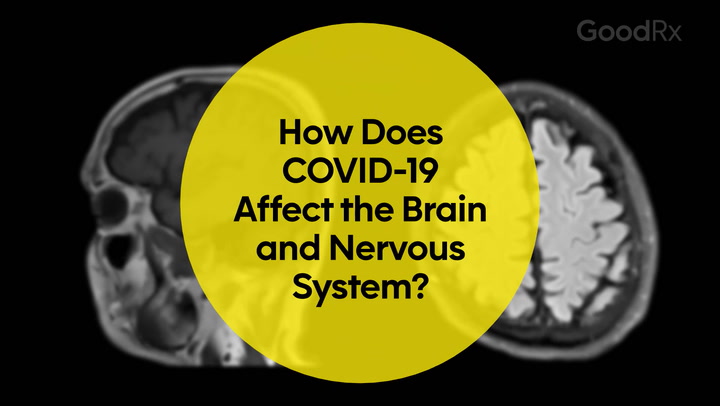
What Is the Most Effective Medication for PTSD? 4 Options, Including Zoloft and Paxil
Key takeaways:
First-choice treatments for post-traumatic stress disorder (PTSD) can involve therapy, medication, or a combination of both. There are four medications currently recommended as first-choice options to treat PTSD.
Zoloft (sertraline) and Paxil (paroxetine) are FDA approved to treat PTSD. But Prozac (fluoxetine) and Effexor XR (venlafaxine) are also good first-choice options, even though they’re not officially approved for PTSD.
Other medications — such as Seroquel (quetiapine), Topamax (topiramate), and Minipress (prazosin) — are sometimes prescribed off-label to treat PTSD. Often, they’re used to target specific symptoms like nightmares or hypervigilance. But there is less evidence to support their use.
Table of contents

Post-traumatic stress disorder (PTSD) is a condition that causes persistent mental and emotional distress following a traumatic event. It can be debilitating and disrupt a person’s everyday life. If you or a loved one is living with PTSD, you’re not alone. It’s estimated that 1 in 11 people will be diagnosed with PTSD at some point in their lifetime.
First-choice treatments for PTSD can involve therapy, medication, or a combination of both. If you and your healthcare provider are considering medication as part of your treatment plan, your provider will work closely with you to find the right medication and dose to treat your symptoms.
In general, which PTSD medication is best for you will depend on your unique situation. But there are four medications that are considered first-choice options for treating PTSD. Here’s what you need to know about each one.
1. Zoloft (sertraline)
Zoloft (sertraline) is a type of antidepressant called a selective serotonin reuptake inhibitor (SSRI). SSRIs work by raising serotonin levels in the brain. Serotonin is a chemical signal that helps deliver messages within the brain and nerves throughout the body. People with PTSD may have changes in these chemical signals that contribute to their symptoms.
Zoloft is an FDA-approved PTSD medication. In studies, it effectively reduced PTSD symptoms in over 50% of people taking it. And it’s generally well tolerated, with the most noticeable side effect being nausea.
Other common side effects of taking Zoloft for PTSD include:
Insomnia (trouble sleeping)
Diarrhea
Dry mouth
Fatigue
Sexual side effects, such as erectile dysfunction and low sex drive
2. Paxil (paroxetine)
Paxil (paroxetine) is another SSRI that’s FDA approved to treat PTSD. Similar to Zoloft, Paxil improved PTSD symptoms in over 50% of the people taking it in clinical trials.
While it’s also generally well tolerated, Paxil does tend to cause more side effects than other SSRIs for many people. Common side effects reported by people taking Paxil for PTSD include:
Nausea
Dry mouth
Drowsiness or insomnia
Weakness
Sexual side effects
3. Prozac (fluoxetine)
Prozac (fluoxetine) is a SSRI antidepressant that’s prescribed off-label to treat PTSD. It has been shown to be helpful for symptoms of the condition, as well as for treating overlapping depression and anxiety symptoms. And it may also help prevent PTSD relapse (a worsening or return of symptoms). So even though it’s not FDA approved to treat the condition, there is strong evidence to support Prozac’s use as a treatment for PTSD.
The most common side effects reported by people taking Prozac include:
Insomnia or drowsiness
Headache
Nervousness
Nausea
Sexual side effects
4. Effexor XR (venlafaxine)
Effexor XR (venlafaxine extended-release) is a type of antidepressant called a serotonin and norepinephrine reuptake inhibitor (SNRI). SNRIs work by raising the levels of both serotonin and norepinephrine in the brain. Like serotonin, norepinephrine is a chemical messenger in the body, and its imbalance may be related to worsening PTSD symptoms.
Effexor XR isn’t an FDA-approved PTSD medication, but it has strong evidence to support its off-label use. In a multinational clinical trial, Effexor XR lessened PTSD symptoms for over 50% of people who took it. It’s also considered to be similarly effective to SSRIs like Zoloft.
Effexor XR can sometimes raise blood pressure, so it should be used with caution if you have hypertension (high blood pressure). Other, more common side effects include:
Nausea
Dizziness or drowsiness
Constipation
Dry mouth
Sweating
Loss of appetite
Sexual side effects
Other PTSD medications
The four antidepressants listed above have the most evidence supporting their effectiveness at treating PTSD. But it’s possible that your healthcare provider may prescribe a different medication off-label. Current guidelines just don’t recommend these alternatives as first-choice medications for PTSD.
Alternative off-label PTSD medications include:
Serzone (nefazodone)
Tofranil (imipramine)
Nardil (phenelzine)
Topamax (topiramate)
Minipress (prazosin), which is sometimes prescribed off-label to treat nightmares associated with PTSD
What about medications like Seroquel and Risperdal?
Atypical antipsychotics are sometimes prescribed off-label to treat PTSD. This class of medication works by balancing brain chemicals like serotonin and dopamine.
Commonly prescribed atypical antipsychotics include:
Some studies have shown that atypical antipsychotics may be helpful for treating PTSD. According to these studies, these medications may be particularly beneficial for people who have psychosis or hypervigilance symptoms, which include irritability, fixating on potential threats, and a heightened state of awareness.
But it’s important to keep in mind that these studies were small and had some conflicting results. More clinical studies are needed to determine if the benefits of atypical antipsychotics outweigh the side effects for most people with PTSD. This is why they’re currently not recommended as first-choice treatment options by experts.
What medications should I avoid if I have PTSD?
Experts suggest healthcare providers avoid prescribing certain medications for PTSD, as they may worsen symptoms in the long term.
Benzodiazepines are commonly prescribed for anxiety conditions and panic attacks. Examples of well-known benzodiazepines are:
Benzodiazepines are sometimes prescribed to temporarily treat symptoms of anxiety accompanying PTSD. However, research suggests that these medications are not effective at treating PTSD itself and can worsen symptoms over time.
Where can I find PTSD resources?
Symptoms of PTSD can be overwhelming, especially if left untreated. Research suggests that there is a strong connection between PTSD and suicide. One large study, for example, found that suicide rates were four to seven times higher for people with PTSD than for those without it.
There are several organizations and tools dedicated to helping people living with PTSD, including:
National Center for PTSD: a research and educational center developed by the Department of Veterans Affairs that offers support and helpful resources for veterans
PTSD Coach: a mobile application designed to provide information about PTSD and tools to help manage stress and PTSD symptoms
Veterans Crisis Line: a telephone line for veterans to connect with trained responders, including fellow veterans
PTSD Foundation of America: an organization committed to bringing hope and healing to veterans experiencing PTSD and their family members
Sidran Institute: a nonprofit organization committed to helping people recover from PTSD and other associated conditions, such as substance use disorder
The bottom line
SSRI and SNRIs) have the most evidence to support their use as treatments for PTSD. Zoloft and Paxil are both FDA-approved PTSD medications. Prozac and Effexor XR are first-choice options that are prescribed off-label.
Other types of medications, like Seroquel and Risperdal, aren’t first-choice PTSD medications, but they may be helpful for some people. However, it’s best to avoid benzodiazepines like Xanax, since they may worsen PTSD symptoms over time.
Why trust our experts?



References
Ahearn, E. P., et al. (2011). A review of atypical antipsychotic medications for posttraumatic stress disorder. International Clinical Psychopharmacology.
American Psychiatric Association. (2022). What is posttraumatic stress disorder (PSTD)?
American Psychological Association. (2017). Clinical practice guideline for the treatment of posttraumatic stress disorder.
Brady, K., et al. (2000). Efficacy and safety of sertraline treatment of postraumatic stress disorder: A randomized controlled trial. Journal of the American Medical Association.
Clinical Practice Guideline for the Treatment of Posttraumatic Stress Disorder. (2017). Medications for PTSD.
Davidson, J., et al. (2006). Treatment of posttraumatic stress disorder with venlafaxine extended release: A 6-month randomized controlled trial. Archives of General Psychiatry.
Fox, V., et al. (2021). Suicide risk in people with post-traumatic stress disorder: A cohort study of 3.1 million people in Sweden. Journal of Affective Disorders.
Guina, J., et al. (2015). Benzodiazepines for PTSD: A systematic review and meta-analysis. Journal of Psychiatric Practice.
Hendrickson, R. C., et al. (2018). Evidence for altered brain reactivity to norepinephrine in Veterans with a history of traumatic stress. Neurobiology of Stress.
Hussain, L. S., et al. (2022). Physiology, noradrenergic synapse. StatPearls.
Marshall, R. D., et al. (2001). Efficacy and safety of paroxetine treatment for chronic PTSD: A fixed-dose, placebo-controlled study. The American Journal of Psychiatry.
Martenyi, F., et al. (2018). Fluoxetine v. placebo in prevention of relapse in post-traumatic stress disorder. The British Journal of Psychiatry.
Martin, A., et al. (2021). Treatment guidelines for PTSD: A systematic review. Journal of Clinical Medicine.
National Institute of Mental Health. (2023). Understanding psychosis.
PTSD: National Center for PTSD. (n.d.). Medications for PTSD.
Wang, H. R., et al. (2013). Atypical antipsychotics in the treatment of posttraumatic stress disorder. Clinical Neuropharmacology.
Zhao, M., et al. (2017). Meta-analysis of the interaction between serotonin transporter promoter variant, stress, and posttraumatic stress disorder. Scientific Reports.
For additional resources or to connect with mental health services in your area, call SAMHSA’s National Helpline at 1-800-662-4357. For immediate assistance, call the National Suicide Prevention Lifeline at 988, or text HOME to 741-741 to reach the Crisis Text Line.

























